Shimano reveals new R9100 Dura-Ace groupset
Shimano has revealed Dura-Ace R9100, the latest incarnation of its top-level road groupset that includes Synchronized Shifting – allowing you to control both derailleurs with one shift lever – a power meter and hydraulic braking, among other innovations.
The new Hollowtech II crankset is all about improving the balance of weight and efficiency. Stress analysis of the current 9000 cranks showed stress risers above where the spider and crank arm come together, so the new crank gets stretched there to delivered decreased weight and better overall strength. Shimano keeps with the same 4-bolt spacing that gives chainring sizing flexibility, but does alter the distance between chainrings. They are now a bit wider spaced for better alignment with 135mm hubs, shorter chainstays, and no drag. The cranks will be available in 165-180mm lengths and 50/34, 52/36, 53/39, 54/42 & 55/42 ring sets.
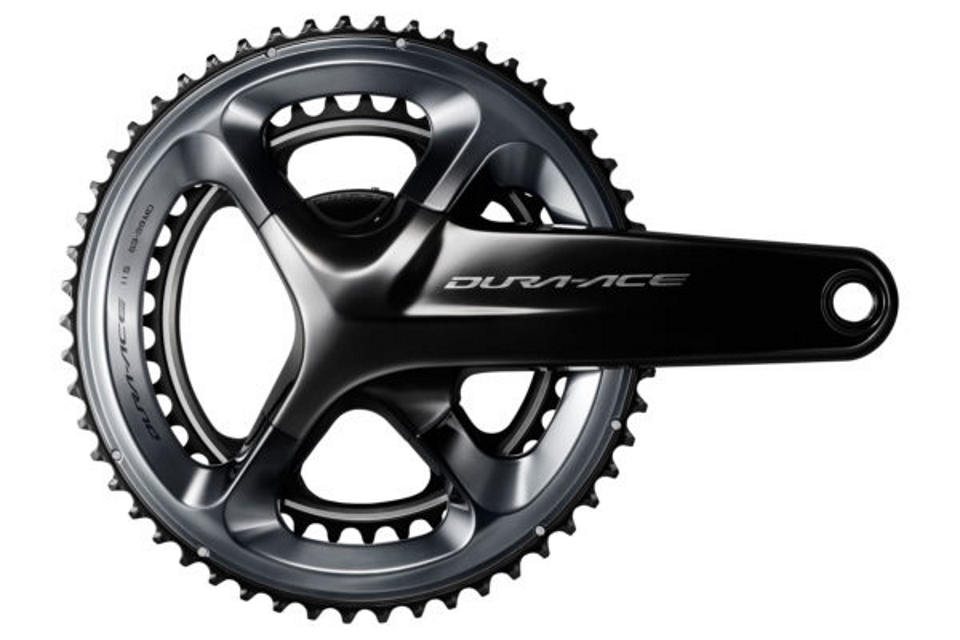
Only one short-ish rear derailleur will be offered for R9100. Shimano calls it a short cage, but the composite cage is clearly a bit longer than what had been called short in the past, and looks like something borrowed from XTR. The rear derailleur will spin around a new selection of Dura-Ace cassettes, including a new wide range 11-30 option.
Also from the trail comes a Shadow mounting system to give the derailleur a lower profile and the ability to work with direct mount hangers like we often see on thru-axle bikes. The pulleys also get redesigned, with a toothy upper pulley for improved chain retention.
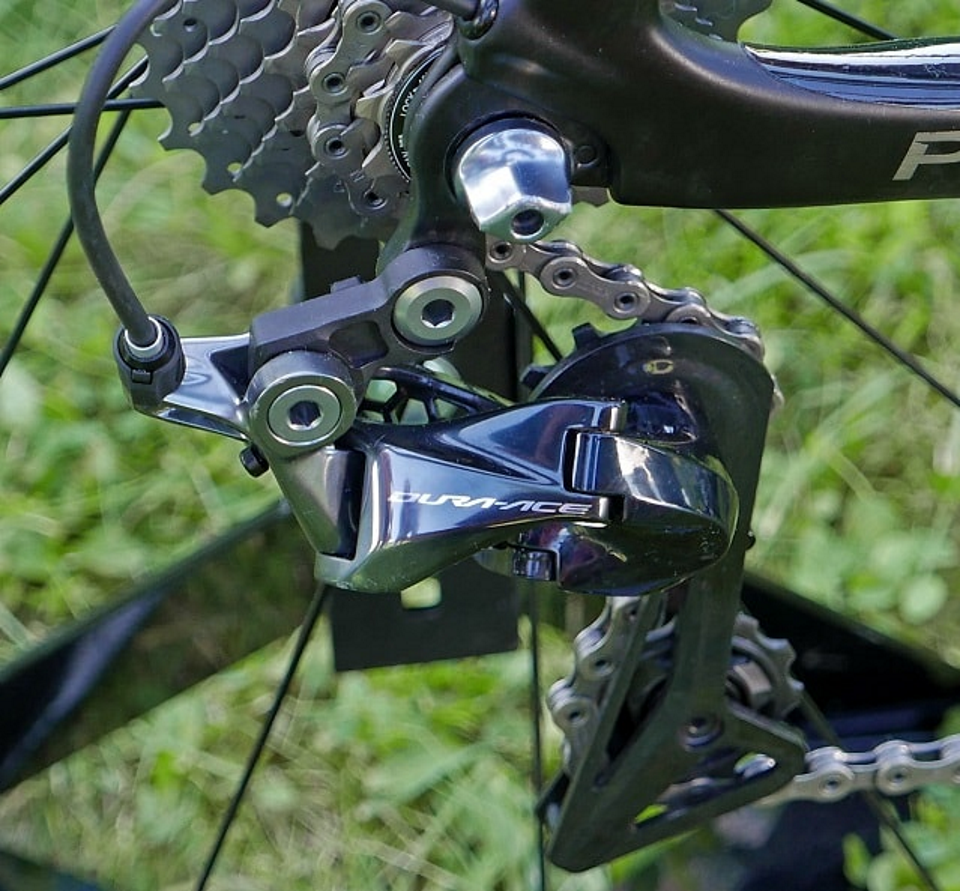
The Dura-Ace shifters get redesigned to have a bit easier to use ergonomics. That also means new hoods that are easier to take off and reinstall. The shape stays mostly the same, if trimmed down a little bit.

The mechanical internals get a big overhaul with faster shifts and a shorter stroke to drop gears. We got a rare chance to sneak away with the demo bike, and the shifting does indeed feel noticeably easier with shorter lever movement. Although in a short spin it wasn’t really discernable if the shifting was any faster over already-quick 9000.
The mechanical front derailleur also gets a big reshaping overhaul, with the promise of even lighter shifting and easier cable routing. The recent trend of long lever arm derailleur seems to be over with this new twist activating mechanism. The new R9100 uses a new design that attached the cable directly and does not require a section of housing at its stop, and has built-in hex-key adjustment so no more barrel adjusters are required. I personally will be happy to see this trickle down to the other groups over the coming years for the betterment of any cyclocrossers out there riding 2x setups.
The R9100 front derailleur comes in 1 braze-on variety only, with a separate band clamp for frames that require it.

Dura-Ace’s dual pivot brakes get an update with a stiffer design, and a more predictable linear braking curve. They also get improved tire clearance up to 28mm tires. Improved stiffness comes from a new internal brake booster like we saw on brakes in the 90s. Shimano claims a 43% reduction of flex in the brake over the already benchmark 9000 calipers.

Shifting over to Di2, Shimano worked hard to bring the ergonomics more in line with mechanical setups. The idea was to trim the lever bodies, so that all four possible shift/brake combinations (mech/mech, mech/hydro, Di2/mech & Di2/hydro) were essentially the same size so that their pro riders could jump back and forth during competitions throughout the race season. That’s welcome for any (wealthy) amateur schlubs, too, who might use Di2 on the road and mechanical for cross.
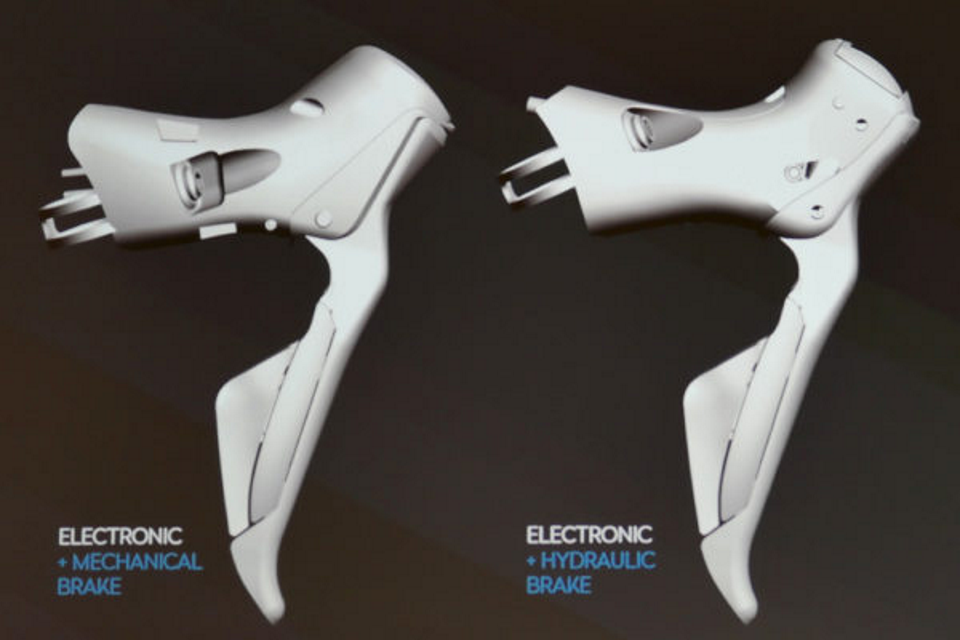
Dura-Ace disc brakes. While the flat-mount-only disc calipers look mostly unchanged, the rotors get a completely new look that improves upon the cooling of both Ice-Tech and Freeza rotors that we’ve seen off-road. The current stainless steel and aluminum sandwich meant the contact with the alloy spider was a point where heat could not so easily transfer. The new Dura-Ace rotors, however, use a alloy carrier that actually becomes the inner sandwich layer under the braking surface. The result is a very different, more closed look, without the raised cooling scoops of Freeza, but still an improved cooling performance of about 30°C at the ~400° max that Shimano’s rotors see under extreme braking. For now they look to only be coming in Centerlock.
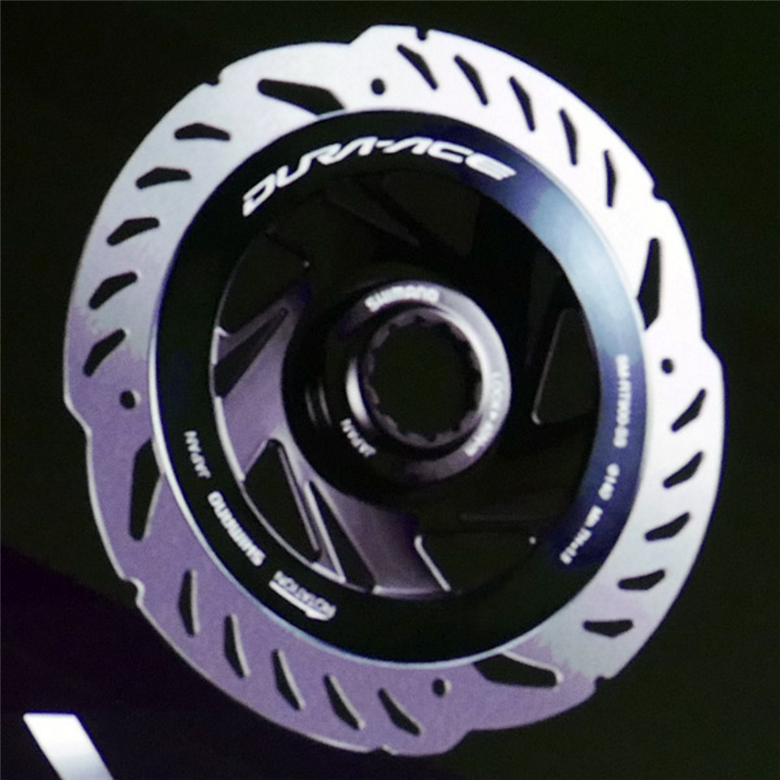
Dura-Ace pedals get a refresh too. That means they get improved rigidity and lower weight with their wide injection molded carbon body. They now get hollow cleat bolts and a bit more open layout.
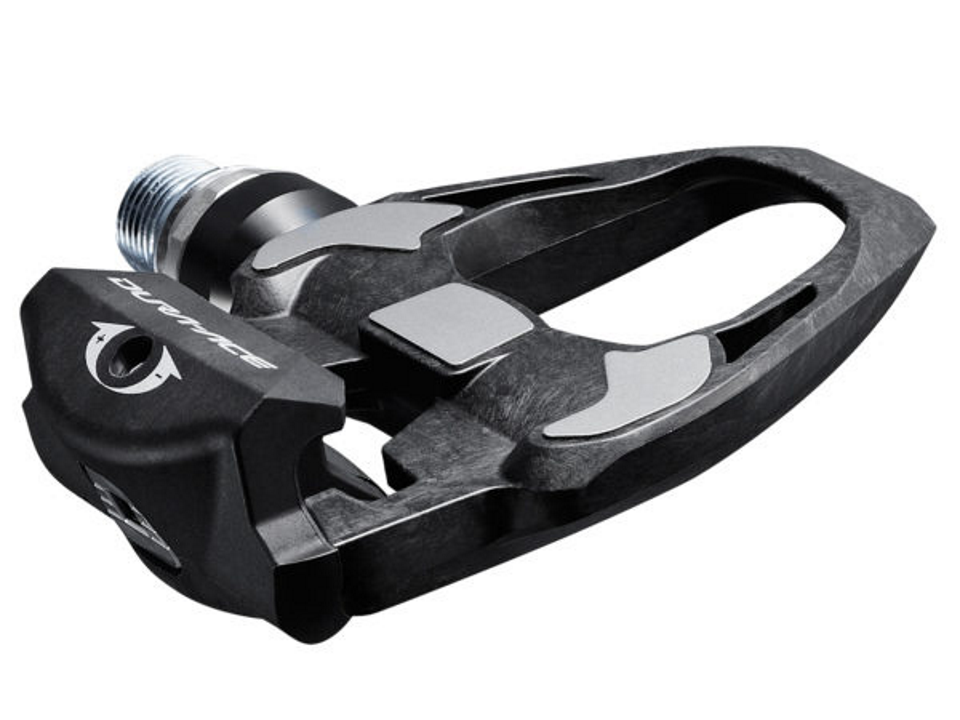
Not to be ignored are the new cassette offerings. While not too different, the cassettes keep weight down with the 5 bigger titanium cogs on a carbon fiber reinforced plastic and aluminum spider. Cassettes will be available in tight cluster 11-25 & 12-25, or in wider range 11-28, 12-28, and the new 11-30.
Several new carbon 28mm wide wheel options are also coming with R9100, in 40mm and 60mm depths for both disc and rim brakes, plus a 24mm version for rim brakes. We’ll take a closer look at those in the coming week.
No word on pricing on the new M9100 Dura-Ace. The mechanical version (and maybe the Di2/rim brake) is expected to be available this fall to consumers, soon after tradeshow time, while the Di2 and hydraulic disc brake versions are expected at the start of 2017.


 199.1 km
199.1 km







